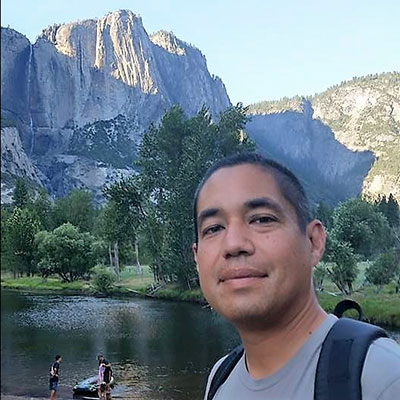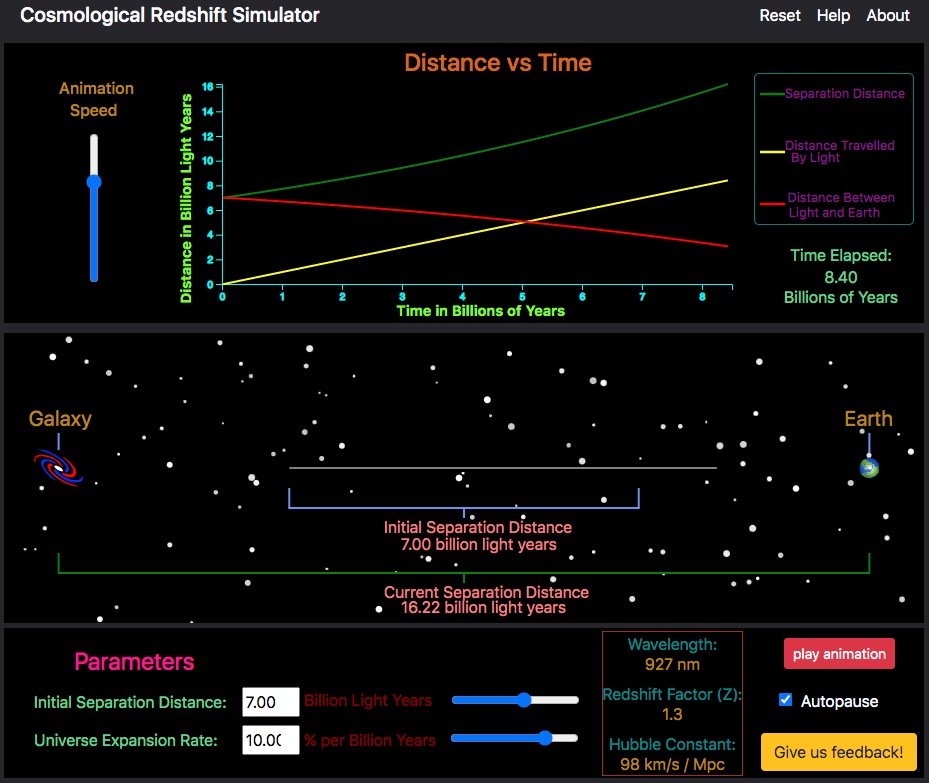
Astronomy
Foothill College AstroSims
The Foothill Astrosims project aims to support astronomy education by:
- Updating existing educational simulations from Flash to Javascript, and
- Develop new simulations to address topics formerly unsupported by the Astronomy Education community
- Curating extant browser-accessible educational simulations
Curated COMPENDIUM OF ASTRO-EDUCATION SIMULATIONS
Our Simulations
We are steadily working on new simulations. Check here for updates!
- Light and Matter
- Solar System structure
- Stars
- Astrobiology
- Galaxies and Cosmology
- Critical thinking
Who are we?
- PI: Geoff Mathews, Ph.D. (mathewsgeoff@foothill.edu)
- Development lead: Baba Kofi Weusijana, Ph.D. (weusijanababakofi@fhda.edu)
- Development team, Winter and Spring 2020: Chris Achenbach, Safi Mohammed, Andrew Tran
Publications
- Visit our poster from the American Astronomical Society's 236th meeting, held online June 1 through 3, 2020
Retired sims
- We have retired our Lookback time simulation, because we added no additional functionality in our re-implementation and the University of Nebraska team has made their own Javascript re-implementation.
Other Astronomy Simulations
The Compendium of Astro-education simulations
We maintain a list of Astro-education simulations by topic.
- The first sheet matches Flash simulations from the largest collection - the University of Nebraska at Lincoln - to similar HTML5 simulations (or, in some cases, re-implementations).
- The second sheet lists simulations addressing further topics - almost 200!
Here we list collections of simulations and individual simulations written in modern frameworks (e.g., HTML5). Simulations in Flash and Java are noted.
- Collections
- Flash with Ruffle emulation. The Nebraska Astronomy Applet Project has a set of simulations covering a wide range of topics in astronomy. Their full library is now being run online using Ruffle to emulate the Flash environment: https://astro.unl.edu/Legacy/. Note that some of the sims are glitchy in Ruffle emulation. They have also posted Windows- and Mac-native versions of the applets to sustain classroom use, and have created HTML5 versions of a few of their simulations.
- A team at Columbia University has rebuilt several of the UNL simulations in Javascript, and provides useful guidance for carrying out further conversions.
- The University of New Mexico hosts a set of simulations written by Kevin Dilts addressing a variety of topics.
- The GEAS Project at NMSU (Nicole P. Vogt) has several simulations and data interpretation tools - with labs! - including a replication of the NAAP HR Diagram explorer and a galactic redshift simulator.
- The PhET Simulations, while physics focused, include numerous tools that are helpful for astronomy teaching (for example, Gravity and Orbits). Some of their simulations have not yet been updated from Flash and Java.
- Open Source Physics has numerous astro-useful simulations in JavaScript.
- ScienceSims at CCNY has an entire section of astronomy simulations.
- Andrew Duffy at Boston University has written a large set of Javascript simulations, including spectroscopy and optics.
- A nice set of HTML5 simulations from Michael Fowler at the University of Virginia.
- Kevin Healy at Mesa CC has built a Baye's simulator, stellar spectrum visualizer, galaxy distribution by redshift viewer, and terrestrial world density simulator.
- The King's Centre for Visualization in Science has a large collection of HTML5 simulations, several of which are astro-relevant. The have an especially strong set of climate-science related simulations.
- JavaLab has a large number of astronomy simulations, as well as more general mathematics, physics, and chemistry.
- High Adventure Science has detailed simulations related to planet hunting and climate change, as well as online units.
- Earth Space Lab has simulations addressing seasons, orbits, and scale.
- The Society for Astronomy Visualization and Education has made several simulations related to gravity and orbits.
- SpectraCalc has a set of high quality atmospheric modeling tools. While not aimed at novices, with additional scaffolding, these could be used with student projects.
-
The AstroApps and VisAstro collections, by Thomas Müller, focuses on 3D visualizations of both renaissance astronomy discoveries like the motions of the planets and cosmology topics such as the expansion of the universe and gravitational lensing.
- Brian Mulligan has made several simulations that emphasize matching models to data.
- oPhysics, made by retired physics teacher Tom Walsh, is focused on physics topics but has many astro-relevant simulations, especially in optics
- A large number of astronomy simulations, written in Mathematica, have been posted with Wolfram Cloud. Most of these will work in browser, but many were optimized for use in a dekstop app.
- Juergen Giesen's GeoAstro collection has a large number of simulations, mostly focusing on solar system motions.
- Some of the sample models included with Netlogo address astronomy relevant topics (e.g., motion of particles in a gas). This modeling tool is also designed with an easy on-ramp for developing ones own simple simulations.
- Python Astro Interactives is a set of Python scripts setup to run online with Binder.
- Java Chris Mihos' Javalab is now defunct. However, the code is available and they welcome reimplementations (with credit, of course!)
- Flash ExoLab, at Harvard's Center for Astronomy, has a sequence of models and observing simulators that build up to interpretation of exoplanet transit data.
- Individual simulations and tools
- Heather Flewelling has made an RGB image constructor using images from the Pan-STARRS telescope.
- Rick Tu has written a very thorough optics ray-tracing application.
- Flat-Earth simulator illustrates how the sun's apparent size and altitude would vary if the Earth was flat.
- Star in a Box, by the Las Cumbres Observatories Global Telescope Network, simulates tracking a star's temperature and luminosity over its lifetime.
- Ian Short at St. Mary's University has made an incredibly thorough star + habitable zone simulator, ChromaStar.
- Go 1.9 deprecated 100,000 Stars, a visualization of about 100,000 nearby stars (plus some artistic license on larger scales). Note, it doesn't appear to make use of color or luminosity information, only position and distance.
- Super Planet Crash is a game-ified n-body solar system simulator in which one can explore gravitational interactions between planets.
- Planetary climate simulator from the NExSS ROCKE-3D project at NASA Goddard.
- A different planetary climate simulator, emphasizing geologic processes, from the Earth Life Science Institute.
- Climate change scenario explorer (since humanity has now become an astronomical process, by changing our atmosphere!)
- NASA's Planetary Spectrum Generator is an advanced tool for generating planetary spectra.
- Flash Impact Earth simulator (there is a text-only version, as well)
- Flash The Interactive Comet Animation at the Windows to the Universe site allows you to adjust a comet's orbit and see the formation and dissipation of the dust and ion tails.
- Thomas Moore has written a rotation curve tool allowing one to adjust a three-parameter dark matter distribution model to match observed rotation curves.
- John Walker's simulation of an orbit in strongly curved spacetime
- VIGOR simulation of binary black holes shows the local spatial distortions that launch gravitational waves, from a team at UT Dallas
Please email us with other simulations to include on the list! Contact Geoff Mathews at mathewsgeoff@foothill.edu
Support
AstroSims was supported in Winter and Spring quarters of 2020 by a Foothill College Equity and Innovation Grant
AstroSims Highlight
Just how far away are distant galaxies? Explore three ideas - the distance to a galaxy when light started its journey, how far the light travelled to reach us, and how far away the galaxy is now - with the Cosmological Redshift Simulation.
Want to know more about AstroSims?
Contact Geoff Mathews, at mathewsgeoff@foothill.edu

Questions?
We're Here to Help!
David Marasco, Dept. Chair
650.949.7492
Office Room 4405


